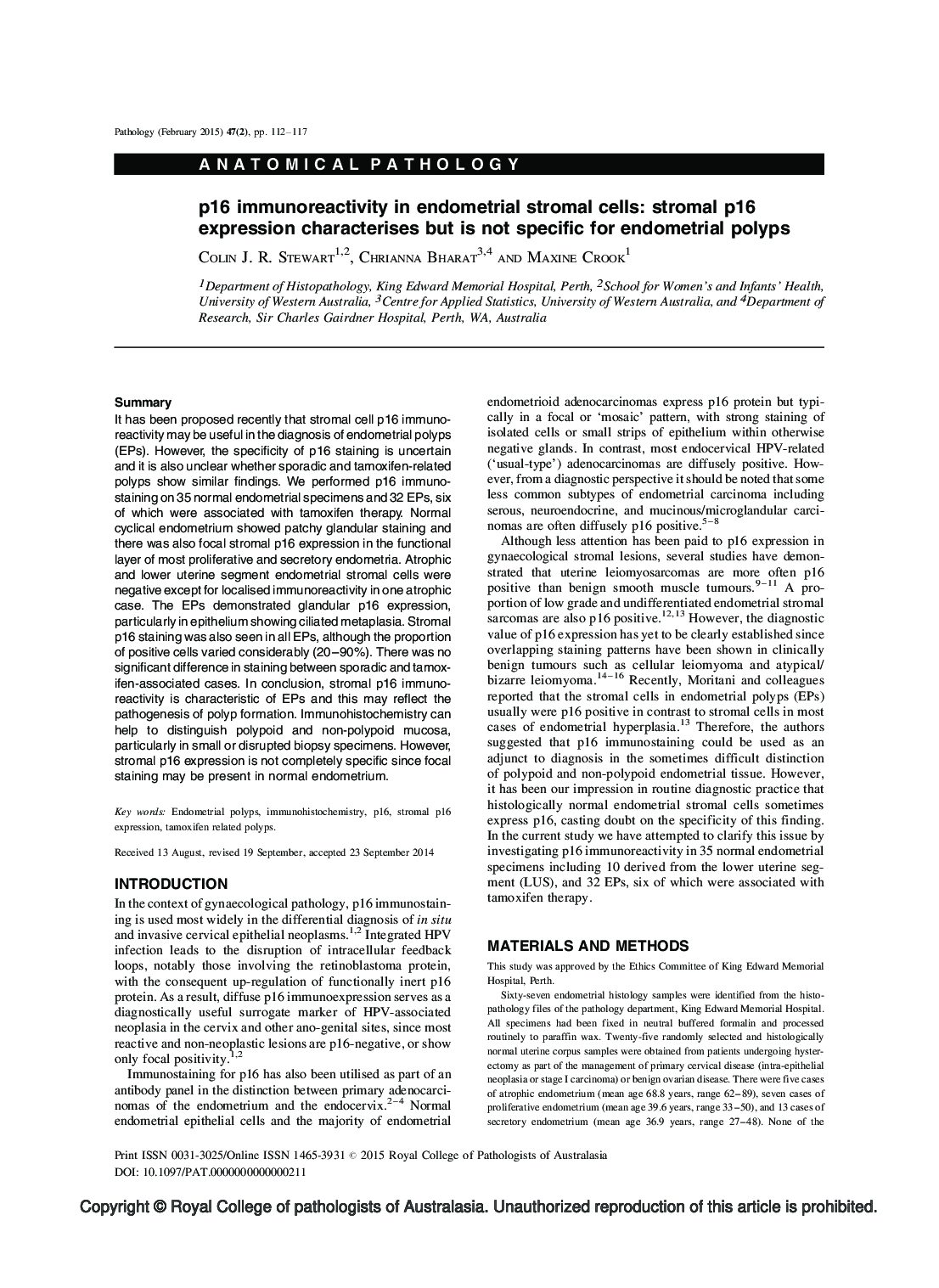| Article ID | Journal | Published Year | Pages | File Type |
|---|---|---|---|---|
| 10254944 | Pathology | 2015 | 6 Pages |
Abstract
It has been proposed recently that stromal cell p16 immunoreactivity may be useful in the diagnosis of endometrial polyps (EPs). However, the specificity of p16 staining is uncertain and it is also unclear whether sporadic and tamoxifen-related polyps show similar findings. We performed p16 immunostaining on 35 normal endometrial specimens and 32 EPs, six of which were associated with tamoxifen therapy. Normal cyclical endometrium showed patchy glandular staining and there was also focal stromal p16 expression in the functional layer of most proliferative and secretory endometria. Atrophic and lower uterine segment endometrial stromal cells were negative except for localised immunoreactivity in one atrophic case. The EPs demonstrated glandular p16 expression, particularly in epithelium showing ciliated metaplasia. Stromal p16 staining was also seen in all EPs, although the proportion of positive cells varied considerably (20-90%). There was no significant difference in staining between sporadic and tamoxifen-associated cases. In conclusion, stromal p16 immunoreactivity is characteristic of EPs and this may reflect the pathogenesis of polyp formation. Immunohistochemistry can help to distinguish polypoid and non-polypoid mucosa, particularly in small or disrupted biopsy specimens. However, stromal p16 expression is not completely specific since focal staining may be present in normal endometrium.
Related Topics
Health Sciences
Medicine and Dentistry
Forensic Medicine
Authors
Colin J.R. Stewart, Chrianna Bharat, Maxine Crook,
